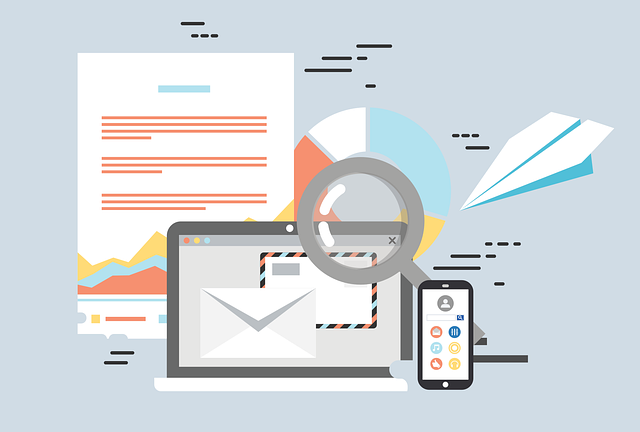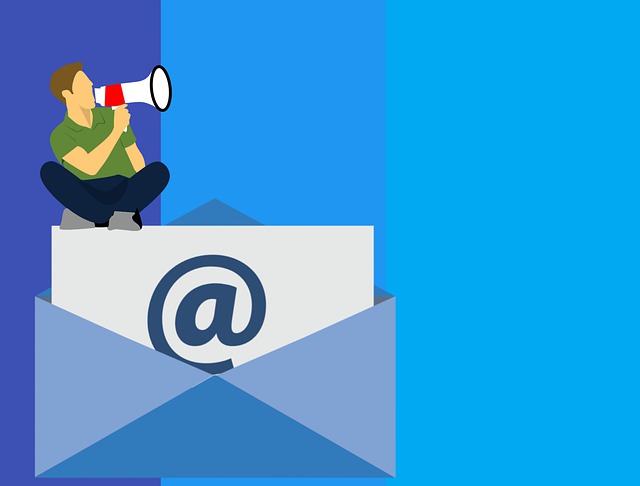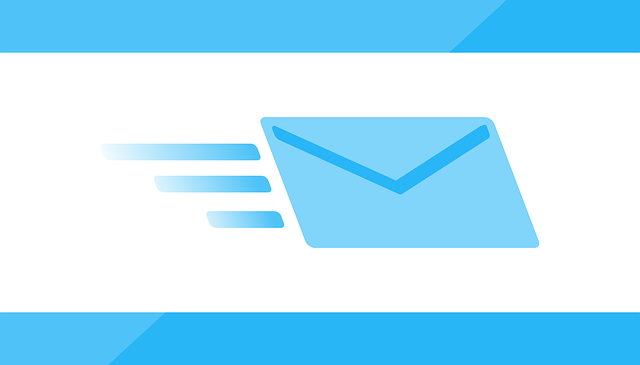Did you know that email marketing has an average return on investment (ROI) of 3800%? That’s right, for every dollar you invest in email marketing, you can expect an astounding $38 return!
If you own a restaurant or food establishment, this statistic should grab your attention and ignite your interest in leveraging the power of email marketing.
In today’s digital age, having a strong online presence is crucial for the success of your business. And email marketing is one of the most effective ways to engage with your customers and drive repeat business.
But how can you ensure that your email campaigns yield the best results? That’s where the ultimate email marketing checklist for restaurants and food establishments comes in.
This checklist will guide you through the essential steps to build a strong email list, segment your audience, create compelling email content, design mobile-friendly emails, and monitor and analyze your campaigns. By following this checklist, you’ll be able to continuously improve and refine your email marketing strategy, leading to increased customer loyalty, higher conversion rates, and ultimately, a thriving business.
So, let’s dive in and unlock the full potential of email marketing for your restaurant or food establishment!
Key Takeaways
- Building a strong email list through incentives, website and social media signup forms, and collecting email addresses at point of sale is crucial for effective email marketing.
- Segmenting the audience allows for targeted campaigns and personalization strategies and email automation help create targeted content.
- Optimizing subject lines and personalizing emails increases engagement, while designing mobile-friendly emails with responsive design ensures readability on different devices.
- Testing emails on different platforms and screen sizes, monitoring and analyzing key metrics such as open rates, click-through rates, and conversions, and continuously improving and refining the email marketing strategy are essential for success.
Build a Strong Email List
Building a strong email list is crucial for reaching hungry customers who are eager to hear about your delicious menu specials. To ensure your email list growth strategies are effective, start by implementing effective email capture methods.
One way to do this is by offering a tempting incentive, such as a free appetizer or a discount on their next meal, in exchange for signing up to your newsletter. Additionally, make it easy for customers to subscribe by placing a prominent email signup form on your website and social media pages.
Collecting email addresses at the point of sale is another effective method. By building a robust email list, you can directly communicate with your audience and keep them informed about your latest promotions and events.
Now, let’s move on to the next step, which is segmenting your audience to create targeted email campaigns that resonate with their preferences.
Segment Your Audience
Segmenting your audience allows you to tailor your email campaigns to specific groups, ensuring that your messages resonate with each individual customer. By using personalization strategies and email automation, you can create targeted content that speaks directly to your customers’ interests and preferences.
Imagine you own a restaurant that offers both vegetarian and non-vegetarian dishes. Segmenting your audience based on dietary preferences allows you to send personalized emails featuring relevant menu items. In a table, you could have two columns: "Vegetarian" and "Non-vegetarian", and four rows: "Appetizers", "Main Course", "Desserts", and "Beverages". This visual representation helps you strategize and automate your email campaigns efficiently.
Now that you have segmented your audience, it’s time to create compelling email content that will engage and excite your customers. [Transition to the subsequent section: ‘Create Compelling Email Content’]
Create Compelling Email Content
To captivate your audience and leave them hungry for more, spice up your email campaigns with mouthwatering content that will have them eating out of the palm of your hand.
Start by optimizing your subject line to grab their attention. Use enticing phrases like ‘Indulge in our delectable specials this weekend!’ or ‘Satisfy your cravings with our exclusive menu.’
Next, personalize your emails to make your customers feel special. Address them by name and tailor the content to their preferences. Share exclusive offers, personalized recommendations, or invite them to special events.
By creating compelling and personalized email content, you’ll make your subscribers eagerly anticipate their next email.
Now, let’s move on to designing mobile-friendly emails, ensuring your messages look appetizing on any device.
Design Mobile-Friendly Emails
When it comes to designing mobile-friendly emails, you need to optimize your content for different devices.
This means ensuring that your emails are easily readable and navigable on smartphones and tablets. By using responsive design, you can ensure that your emails automatically adjust to fit different screen sizes.
Additionally, it’s essential to test your emails on various platforms and screen sizes to ensure that they look and function correctly for all recipients.
Optimize Emails for Different Devices
Ensure your emails look great on any device by optimizing them for different screen sizes and resolutions. To make sure your emails are optimized for different devices, consider the following:
-
Email personalization: Tailor your emails to your audience by using their names and personal preferences. This will make your emails more engaging and increase the chances of conversion.
-
A/B testing for email performance: Experiment with different email designs and layouts to see which ones perform better. This will help you identify what works best for your audience and optimize your emails accordingly.
-
Use responsive design: Create emails that adapt to different screen sizes and resolutions. This will ensure that your emails are easily readable and navigable on any device.
-
Simplify your design: Opt for a clean and simple design that is easy to read and navigate. Avoid clutter and make sure your call-to-action buttons are easily accessible.
By optimizing your emails for different devices, you can ensure a seamless user experience and maximize the effectiveness of your email marketing campaigns.
Now, let’s explore how to use responsive design for easy reading and navigation.
Use Responsive Design for Easy Reading and Navigation
Now that you know the importance of optimizing your emails for different devices, it’s time to take it a step further with responsive design.
Responsive design is a game-changer when it comes to ensuring your emails are easy to read and navigate on any screen size. With responsive design, your email will automatically adapt to fit the screen of the device it is being viewed on, whether it’s a smartphone, tablet, or desktop.
This not only enhances the user experience but also increases the chances of your email being read and acted upon. To make the most out of responsive design, keep your email layout simple and clean, use a single column design, and ensure that your call-to-action buttons are easily clickable.
By incorporating these responsive design tips, you can create emails that look great and deliver results on any device.
Now, let’s move on to the next step and test your emails on different platforms and screen sizes.
Test Emails on Different Platforms and Screen Sizes
To maximize the effectiveness of your email campaigns, it’s essential to test them on different platforms and screen sizes. Studies show that 46% of email opens occur on mobile devices, so it’s crucial to ensure that your emails are optimized for mobile viewing. Here are some reasons why testing is important:
-
Email deliverability: Testing your emails on various platforms helps identify any issues that may affect deliverability, such as broken links or formatting errors.
-
A/B testing for email subject lines: By testing different subject lines, you can determine which ones resonate best with your audience and improve open rates.
By testing your emails on different platforms and screen sizes, you can ensure that they are visually appealing and easy to read for all recipients.
Now, let’s dive into the next section and learn how to monitor and analyze your email campaigns for even better results.
Monitor and Analyze Email Campaigns
Keep an eye on your email campaigns by regularly checking the performance and analyzing the data to improve your restaurant’s marketing strategy.
Monitoring and analyzing your email campaign metrics is crucial to understanding its success and making necessary adjustments. Dive into the data to see how many recipients opened your emails, clicked on links, and made purchases as a result. Pay attention to the click-through rate, conversion rate, and overall engagement.
Identify patterns, trends, and areas of improvement to continuously refine your email marketing strategy. Experiment with different subject lines, content, and CTAs to maximize your campaign’s effectiveness.
By consistently monitoring and analyzing your email campaigns, you’ll be able to optimize your efforts and drive more traffic and revenue to your restaurant.
So, how can you continuously improve and refine your strategy?
Continuously Improve and Refine Your Strategy
Looking to enhance your restaurant’s email campaign strategy? Continuously improving and refining your approach is essential for staying ahead of the competition and driving more traffic and revenue to your business.
To achieve this, you need to focus on measuring the success of your email campaigns and implementing feedback. Start by analyzing key metrics such as open rates, click-through rates, and conversion rates to gauge the effectiveness of your emails. Identify what elements are resonating with your audience and what needs improvement.
Use A/B testing to experiment with different subject lines, layouts, and content to optimize your emails for maximum impact. Additionally, actively seek feedback from your subscribers through surveys or social media to gain insights and understand their preferences better.
By constantly evaluating and adjusting your email strategy, you can ensure that your campaigns are always evolving and delivering the best results for your restaurant.
Frequently Asked Questions
How can I effectively target specific customer groups with my email campaigns?
To effectively target specific customer groups with your email campaigns, you need to implement smart targeting strategies and customer segmentation.
By dividing your customer base into distinct groups based on demographics, preferences, and purchase history, you can tailor your messages to their specific needs and interests. This personalized approach will engage your audience, increase open rates, and drive conversions.
Don’t underestimate the power of knowing your customers and delivering targeted content that speaks directly to them.
What are some best practices for personalizing email content for my restaurant’s subscribers?
To effectively personalize email content for your restaurant’s subscribers, implement segmentation strategies and employ various personalization techniques.
By segmenting your subscriber list based on their preferences, demographics, or past interactions, you can tailor your content to their specific interests.
Use dynamic content to insert personalized details like their name or order history.
Create targeted offers and promotions that resonate with each segment, ensuring a higher engagement and conversion rate.
Personalization enhances customer experience and builds loyalty, leading to long-term success for your restaurant.
How often should I send out promotional emails to my customers without overwhelming them?
To maintain customer engagement, it’s crucial to strike a balance with email frequency. Bombarding your customers with promotional emails can overwhelm them, leading to unsubscribes or ignored messages. Instead, focus on quality over quantity. Send out targeted and personalized emails that offer value to your customers. Consider their preferences, interests, and buying behavior to determine the optimal email frequency. By finding the sweet spot, you’ll keep your customers engaged and eager to open your emails.
Are there any specific email design tips or templates that work well for food establishments?
When it comes to email design tips and templates for food establishments, remember that visuals matter. Research shows that emails with engaging images have a 42% higher click-through rate.
So, make sure to use high-quality photos of your mouthwatering dishes and vibrant restaurant ambiance.
Additionally, keep your email templates clean and easy to navigate. Use a clear and attention-grabbing subject line, incorporate your logo, and include a call-to-action button that leads to your website or online ordering platform.
How can I measure the success of my email campaigns and track important metrics like open rates and click-through rates?
To measure the success of your email campaigns and track important metrics like open rates and click-through rates, you need to be strategic.
Start by analyzing your email open rates to improve engagement. Craft compelling subject lines and personalize your content to entice recipients to click.
Then, track your click-through rates to measure the effectiveness of your email content and calls-to-action.
By consistently analyzing these metrics, you can optimize your campaigns and achieve better results.
Conclusion
Congratulations! You’ve now armed yourself with the ultimate email marketing checklist for restaurants and food establishments. By implementing these strategies, you’ll be able to build a strong email list, segment your audience, create compelling content, design mobile-friendly emails, and monitor and analyze your campaigns.
Remember, email marketing is like a tantalizing dish that keeps your customers craving for more. So, keep refining your strategy, adding that secret ingredient of continuous improvement, and watch your emails sizzle with success.
It’s time to cook up a storm and captivate your audience like never before!










